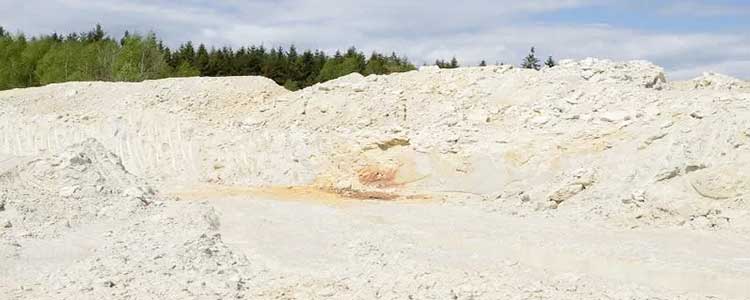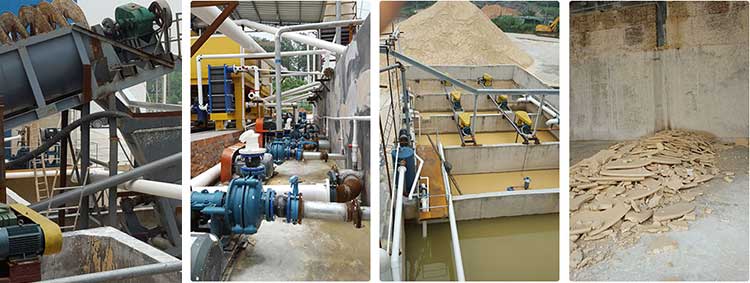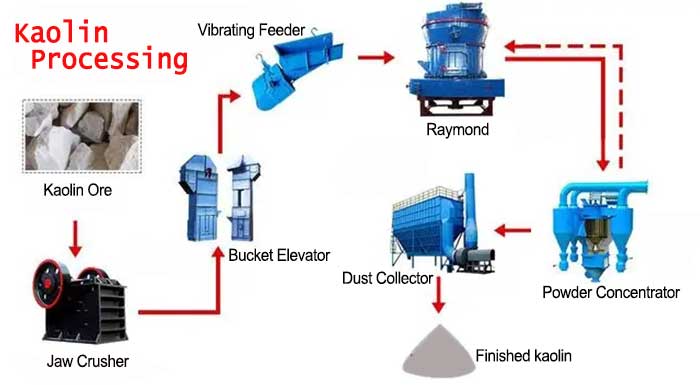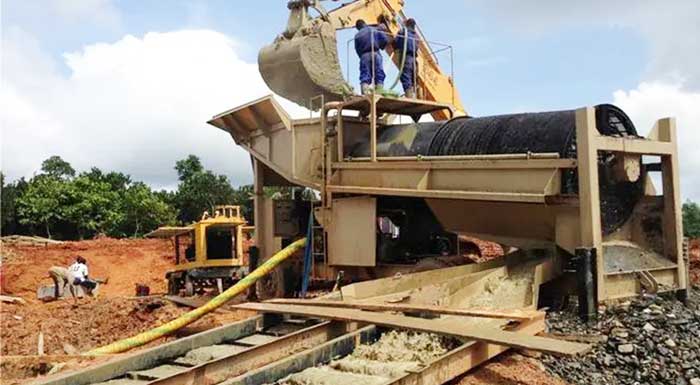Kaolin Processing Plant | Water Washed Kaolin Process

What is Kaolin
Kaolin is a non-metallic mineral, mainly based on clay minerals of the kaolinite family, which contains clays and claystones. It is known as dolomite because of its white color and fineness. Kaolin is mainly composed of minerals such as kaolinite, eclogite, hydromica, illite, montmorillonite, as well as quartz and feldspar.
Properties of Kaolin
Kaolin has a variety of physical and chemical properties. Pure kaolin is a white, fine, fluffy clay with good plasticity and refractory properties. These properties make kaolin important in a variety of industrial applications.
Kaolin Applications
- Kaolin has numerous applications in the paper, ceramics and refractory industries. Kaolin is widely used for its good plasticity, refractoriness and other physical and chemical properties.
- Kaolin is used in the paint, rubber, glaze and cement industries. Kaolin as a filler enhances the abrasion resistance and mechanical strength of rubber, and also improves the stability, moisture resistance, whiteness and gloss of paints.
- Kaolin is also widely used in plastics, paints, pigments, abrasive wheels, pencils, daily necessities, pesticides, pharmaceuticals, petroleum, chemicals, building materials and other industries.
Washing Kaolin Production Process(10 Steps)

Soft kaolin is usually produced by water washing method. The process of washing kaolin production mainly includes the following steps:
- Mix Mortar: mix kaolin ore with a certain proportion of water to form a slurry.
- Mashing: In the mixer or masher, kaolin is dispersed and separated from sandy minerals and plant fibers by adding water and dispersant, in order to prepare a slurry of suitable concentration for the next process operation.
- Slurry Classification & Sand Removal: The impurities such as quartz, feldspar and mica in the raw kaolin ore are coarse in particle size, generally larger than 325 mesh, while the kaolin is fine in particle size, mainly enriched in -2μm. Most of the quartz, feldspar coarse sand can be removed by spiral classifier. Then hydrocyclone is used to remove the fine sand (such as fine quartz, feldspar and other impurities) in kaolin.
- Classification: Classification is carried out by horizontal spiral centrifuge, and process parameters (e.g. separation factor) are adjusted according to different materials to maintain stable product quality.
- Stripping: In order to produce coating grade kaolin products, the thicker laminated kaolin needs to be stripped into thin flakes, which can be realized by wet grinding, extrusion and chemical soaking.
- Washing & Sieving: The slurry after the above treatment is put into the water washing machine for repeated mixing and washing, while the methods of multiple washing and repeated sieving are used to ensure the purity of kaolin.
- Magnetic Separation: If we need to get high quality or high quality kaolin, we also need to carry out strong magnetic separation or high gradient magnetic separation to further remove impurities. Washing kaolin with a wet strong magnetic separator with a magnetic strength of up to 16,000 GS can remove regenerated iron and other weak magnetic materials from kaolin.
- Chemical Bleaching: Chemical bleaching of kaolin is often related to the usability of kaolin and the impurities it contains. If the whiteness index of kaolin after magnetic separation still fails to meet the standard, chemical bleaching method can be used for treatment.
- Filter Press: High pressure slurry feed is used to improve productivity, ensure that the product moisture is lower than 32~35%, save energy consumption and improve the working environment.
- Drying: The cleaned kaolin powder is dried to remove the water, usually using a dryer for strong drying.

Kaolin Washing Plant Video
Dry Processing of Kaolin (5 Steps)

Dry processing is suitable for kaolin ores with high whiteness, low sand and gravel content, and suitable particle size distribution. The cost of dry processing production is low, and the products are usually used as low-priced fillers in industries such as rubber, plastic, and paper. The production process of dry process kaolin mainly includes the following steps:
- Raw Material Preparation: Crush the extracted kaolin ore to reduce the particle size to a suitable size for subsequent processing, usually reducing the particle size to around 6mm.
- Grinding: Grinding: The crushed kaolin enters the grinding stage, and small pieces of material are sent to the material bin by a hoist. Then, they are uniformly and quantitatively fed into the ball mill grinding chamber of the mill by a vibrating feeder for grinding, in order to remove most of the sand and gravel.
- Classification & Screening: After grinding, the kaolin enters the classification and screening stage, and different particle sizes of kaolin are separated using vibrating screens or other screening equipment to meet the needs of different products.
- Magnetic Separation & Iron Removal: In order to further improve the purity of kaolin, magnetic separation treatment is usually required to remove iron impurities from it using magnetic force.
- Packaging & Storage: After the above treatment, the kaolin is packaged according to product requirements and stored in a dry and ventilated warehouse to prevent moisture and pollution.
- (Optional) Calcination: Depending on specific requirements, calcination steps may be included. Calcination can make the molecular structure of kaolin more stable, improve its thermal stability and hardness. The calcination temperature is usually around 1300 ℃, and strict control of heating rate and uniform heating is required.
 Water Washed Kaolin VS Calcined Kaolin
Water Washed Kaolin VS Calcined Kaolin Analysis of 8 Whitening Methods for Kaolin
Analysis of 8 Whitening Methods for Kaolin Silica Sand Washing Plant | Quartz Sand Processing
Silica Sand Washing Plant | Quartz Sand Processing Gold Washing Plant | Gold Wash Process & Equipment
Gold Washing Plant | Gold Wash Process & Equipment



